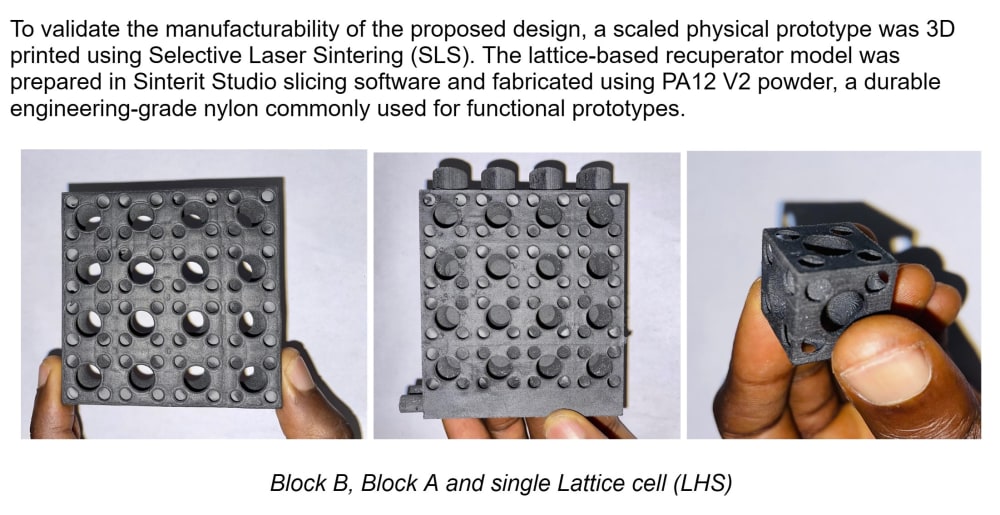This entry introduces a NASA-award-winning cryogenic recuperator designed for advanced space-based thermal systems. This design was awarded 1st Place in NASA’s Cryogenic Recuperator Design Challenge on GrabCAD. Official results: https://grabcad.com/challenges/novel-recuperator-design-for-cryogenic-fluid-management-system/results, selected from over 100 global submissions and evaluated by a panel of NASA engineers and subject-matter experts.
At its core, the recuperator uses a hollow Schwarz Primitive lattice geometry, made manufacturable through additive manufacturing (AM) with GRCop-42, a high-performance copper alloy developed by NASA. This approach enables a highly efficient, lightweight heat exchanger optimized for cryogenic environments, addressing the challenges of space-based propellant storage and thermal regulation.
The innovation lies in the TPMS-based lattice structure, which achieves a high surface-area-to-volume ratio for maximum heat transfer while minimizing mass and pressure drop. The design is modular, with two core components:
- Block A integrates the inlet/outlet ports.
- Block B is a stackable unit to scale thermal capacity based on mission needs.
Sealing is ensured using PTFE gaskets, chosen for their excellent cryogenic properties. This modular, sealable architecture enables easier inspection, maintenance, and powder removal—key to the design’s manufacturability.
Thermal and flow simulations in SolidWorks confirmed strong performance. The recuperator achieved 89% thermal effectiveness under cryogenic conditions (hot inlet at 300K, cold inlet at 90K), with smooth pressure distribution and no fluid mixing. The calculated power density is 2,621 W/kg, dramatically exceeding NASA’s target of 100 W/kg.
To prove feasibility, a scaled physical prototype was 3D printed using SLS with PA12 nylon, successfully validating the lattice geometry’s printability without supports and demonstrating structural fidelity. This printed model also showcased the design’s ability to withstand post-processing like sandblasting—a critical feature for real-world AM applications.
The system is engineered to operate under extreme vacuum, temperature, and vibration conditions, with performance targets including:
- Pressure: ~150 psi
- Leak rate: ≤ 10⁻⁶ sccm GHe
- Working fluid: Neon (>20 g/s)
This innovation is ideal for spacecraft cryogenic storage, thermal control systems, satellite propulsion, and long-duration missions. The modular design allows custom configuration for a wide range of aerospace and defense applications.
What sets this design apart is its integration of advanced materials, generative geometry, and real-world feasibility—demonstrated both through simulation and physical prototyping. The NASA award validates its innovation, performance, and manufacturability.
In summary, this recuperator redefines what’s possible in cryogenic thermal management by fusing engineering precision with the freedom of additive manufacturing. Its compactness, scalability, and extreme efficiency position it as a high-impact solution for the future of space exploration and aerospace systems.
Like this entry?
-
About the Entrant
- Name:Ebube Nwobodo
- Type of entry:individual
- Software used for this entry:a
- Patent status:none









